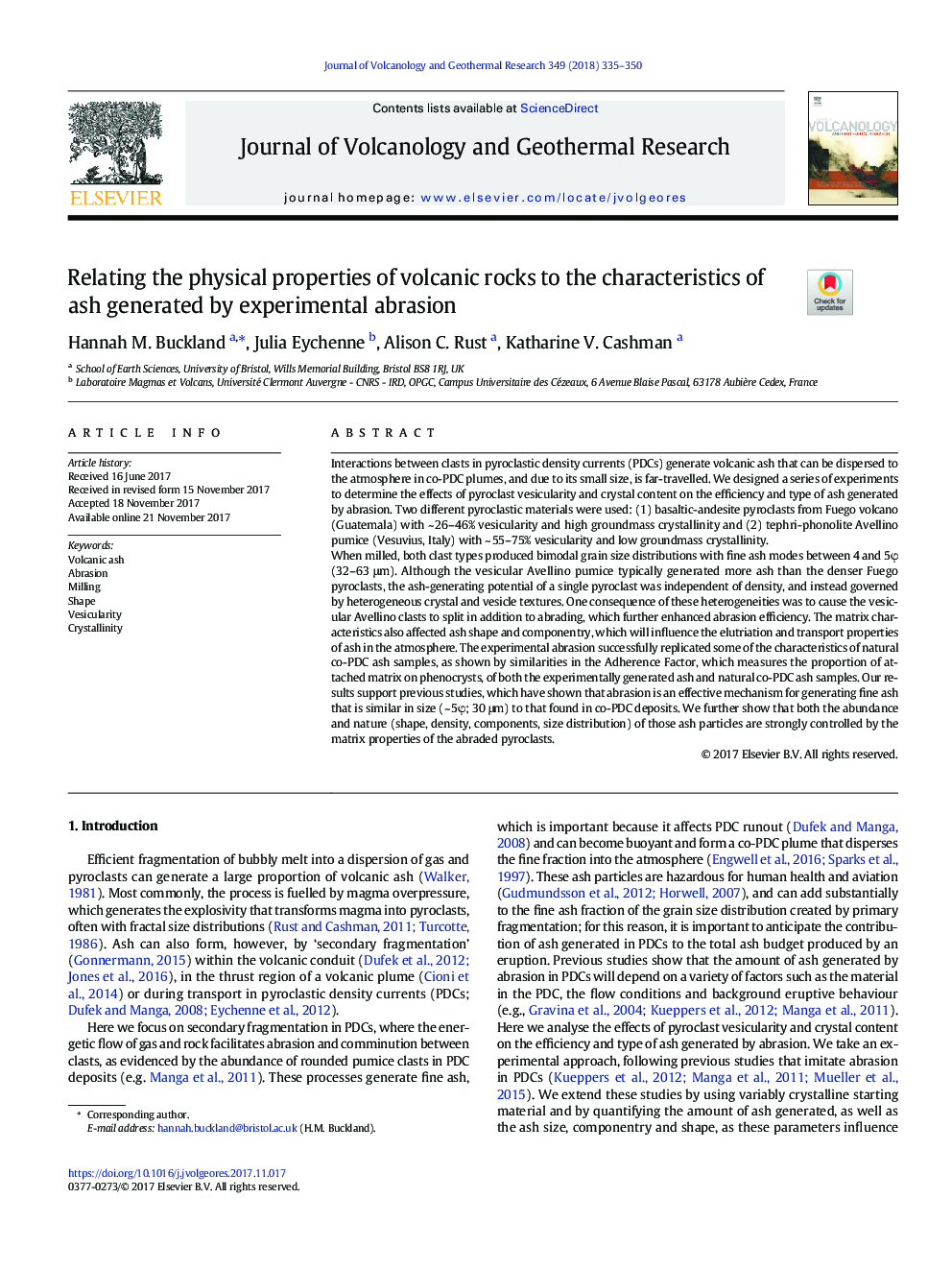| Article ID | Journal | Published Year | Pages | File Type |
|---|---|---|---|---|
| 8911436 | Journal of Volcanology and Geothermal Research | 2018 | 16 Pages |
Abstract
When milled, both clast types produced bimodal grain size distributions with fine ash modes between 4 and 5Ï (32-63 μm). Although the vesicular Avellino pumice typically generated more ash than the denser Fuego pyroclasts, the ash-generating potential of a single pyroclast was independent of density, and instead governed by heterogeneous crystal and vesicle textures. One consequence of these heterogeneities was to cause the vesicular Avellino clasts to split in addition to abrading, which further enhanced abrasion efficiency. The matrix characteristics also affected ash shape and componentry, which will influence the elutriation and transport properties of ash in the atmosphere. The experimental abrasion successfully replicated some of the characteristics of natural co-PDC ash samples, as shown by similarities in the Adherence Factor, which measures the proportion of attached matrix on phenocrysts, of both the experimentally generated ash and natural co-PDC ash samples. Our results support previous studies, which have shown that abrasion is an effective mechanism for generating fine ash that is similar in size (~ 5Ï; 30 μm) to that found in co-PDC deposits. We further show that both the abundance and nature (shape, density, components, size distribution) of those ash particles are strongly controlled by the matrix properties of the abraded pyroclasts.
Related Topics
Physical Sciences and Engineering
Earth and Planetary Sciences
Geochemistry and Petrology
Authors
Hannah M. Buckland, Julia Eychenne, Alison C. Rust, Katharine V. Cashman,
